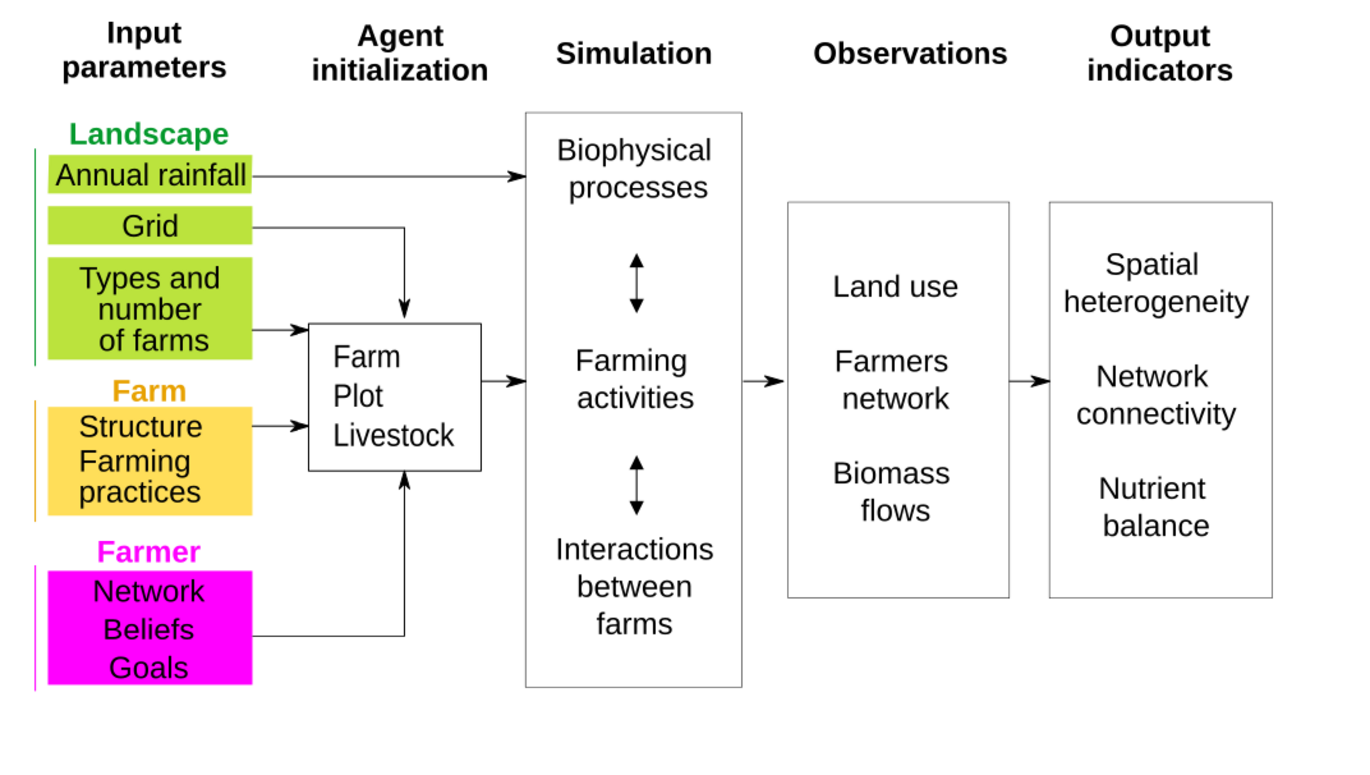An agent-based model to learn about crop-livestock farm interactions in landscapes
In the MIXED project a model is built to compare ‘what-if’ scenarios of diverse farm decisions regarding interactions with other farms within a given mixed landscape

The MIXED project hypothesizes that mixed farming and agroforestry systems (MiFAS) have higher resilience and climate adaptation potential than non-mixed systems. In the project the concept of “mixedness” of agricultural systems is addressed at different levels: farm, landscape, value chain, country and Europe.
As a common factor for all these levels, the definition of “mixedness” implies two conditions: a diversity of elements (activities, actors, functions) and an integration among them, having the final aim of promoting circularity and synergies. For example, crops can provide feed to livestock, which, in turn provides manure that decreases the need for synthetic fertilisation.
“Mixedness” as emerging from interactions among farmers
In the MIXED project, the level of landscape is considered from different perspectives. Here, specifically, the researchers take the following perspective:
“If, at the farm level, “mixedness” is promoted by changes in practices structural-modifications, at the landscape level it is promoted by interactions among farmers. It can happen that specialized but complementary farms interact by exchanging feed or manure and, while not being themselves mixed, the create a mixed landscape. This requires building connections and trust among farmers” (A graph-based modelling approach for farm interactions).
In order to study the importance of the connections among farmers, the MIXED project aims to build an agent-based model of farmers interactions. Myriam Grillot (INRAE), who is main responsible for the construction of the model, states:
“A model is built to compare ‘what-if’ scenarios of diverse farm decisions regarding interactions with other farms within a given mixed landscape […] The high-level purpose of this model is to understand how farm connectivity between farms in a mixed landscape changes farm and/or landscape resilience towards given hazards. Our specific purpose is to test whether specific farm networks (issued from farm interactions) within a mixed landscape improve farm and/or landscape resilience”.
The model is agent-based. Indeed, agent-based models show several advantages for this type of analysis. These models can represent the heterogeneity of farmers, their behaviour, with different perceptions and knowledge of the surrounding environment:
“Individual behaviour is key for understanding mixed landscapes. Farmers are different (crop farmers, livestock farmers, mixed farmers) and implement choices (e.g., how much feed to exchange, with whom) differently. In the model, each farm is conceived as a stand-alone object within a landscape, in an agent-based model. Interactions among farms can be represented by fluxes of manure or feed, or even information. Model simulations can compute farm network through farm interactions, and individual representation of each farm makes it possible to explore the role of each farm in the landscape - e.g., some farms might be more important than others as they constitute key nodes in the landscape for manure and feed” (A graph-based modelling approach for farm interactions).
Results and next step
At this moment, the model is formulated and some initial simulations are being tested. The next step is to bring information from real networks into the models. For this reason, it will be important to know which are the main fluxes among farmers and which are the criteria upon which farmers make choices.
If you want to learn more about the agent-based model, this report describes the modelling framework, which will be implemented using Gama (http://gama-platform.org/): a multi-agent simulation and spatially explicit modelling platform.
